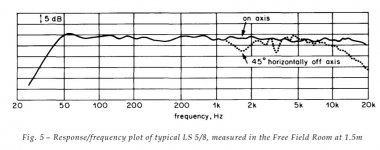Dons non-technical hat...The "BBC Dip" has been variously described as a drop in midrange presence or a gentle rolloff in the top end.
The theory of filters says we use the low-distortion Linkwitz-Riley solution, which can be 12 or 24dB/octave and a -6dB crossover point:
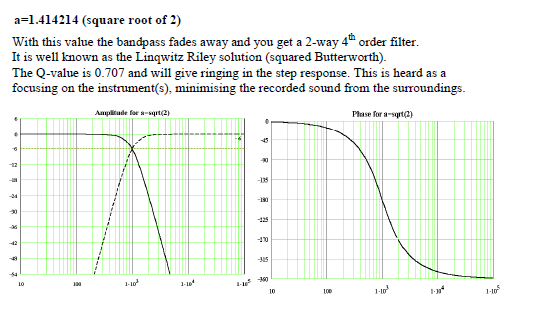
In the real world it doesn't work so well:
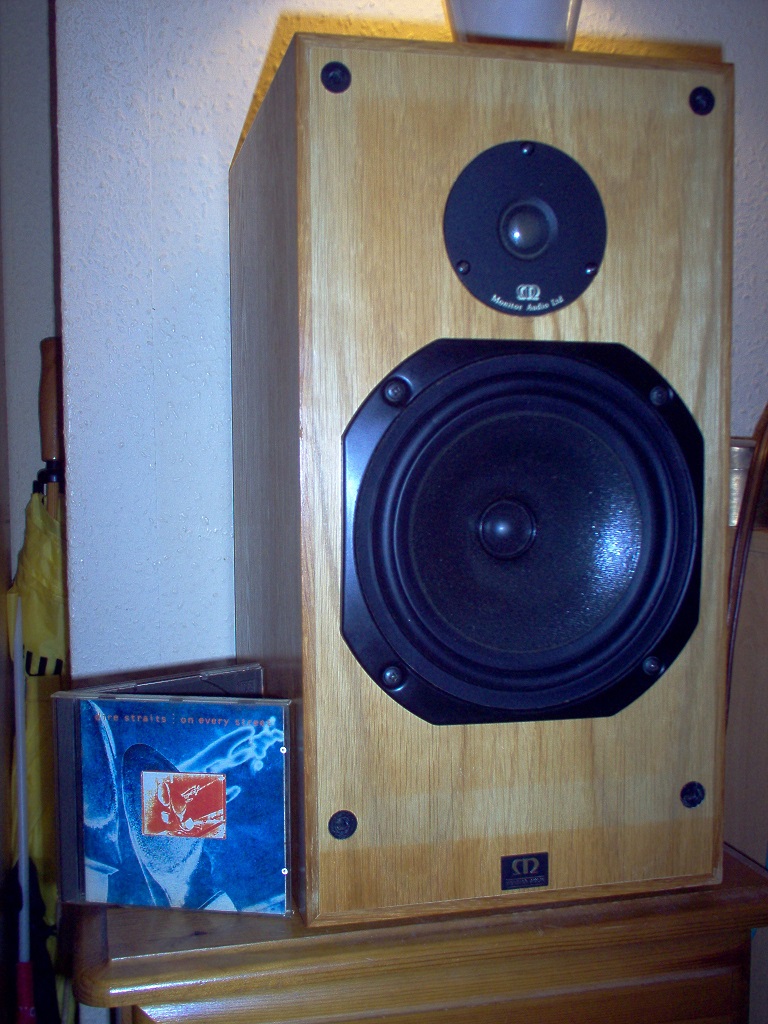
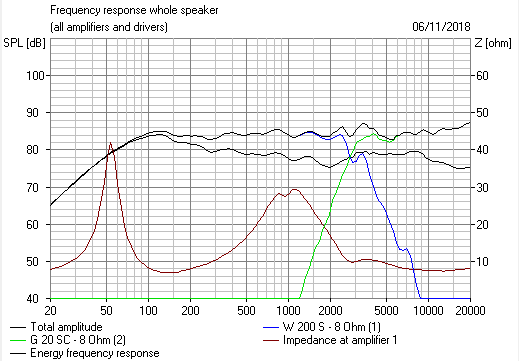
See the curve marked Energy-Frequency response? Big dip near crossover where the 8" bass becomes highly directional? This makes the tweeter sound too bright, recesses voices and generally becomes a mess.
IMO, things get easier with a good three-way. This may be what you are looking for:
SEAS-3-Way-Classic
The theory of filters says we use the low-distortion Linkwitz-Riley solution, which can be 12 or 24dB/octave and a -6dB crossover point:
In the real world it doesn't work so well:

See the curve marked Energy-Frequency response? Big dip near crossover where the 8" bass becomes highly directional? This makes the tweeter sound too bright, recesses voices and generally becomes a mess.
IMO, things get easier with a good three-way. This may be what you are looking for:
SEAS-3-Way-Classic
If by "bump" you mean a boost, surely that would make matters worse rather than better.
It depends. If that dip is intentional and isn't accompanied by off-axis anomalies and if the speaker can take also the slight increase in power in this frequency range then go for it.
If there is a notch (i.e. a cancellation) and not a slight dip somewhere in an amplitude response then it is indeed unwise to try to "stuff" it because you are just pumping power into a "black hole".
Regards
Charles
I seem to be missing something here. I though that the arguments over this were between flat, where it is apparently too bright and fatiguing, or dipped to ameliorate this. Now a boost is being suggested. BTW my own build is 24dB/octave, and others complain that it is generally too toppy.
In the above graph system7, the dip you refer to must be that 2dB trough at 2.8kHz, and I would doubt that that is significant. 100 to 20k +/- 3dB seems pretty good to me.
In the above graph system7, the dip you refer to must be that 2dB trough at 2.8kHz, and I would doubt that that is significant. 100 to 20k +/- 3dB seems pretty good to me.
Our dear old friend Sreten was, TBH, a bit of a forum irritant. I was always clear that the BBC Dip was a gentle rolloff in top-end treble in a two way. And I think Troels Gravesen agrees with me.
But however you define it, it highlights a problem in two ways. It's actually trying to match dispersion in wildly different drivers.
Let's look at a successful 5" plus 3/4" two way, loosely a BBC LS3/5A:
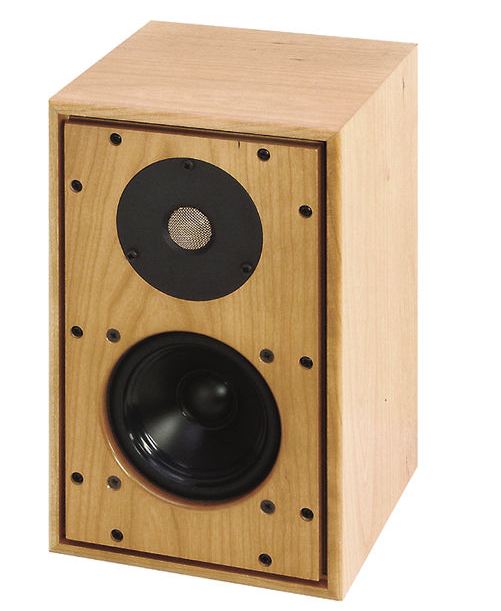
Maybe a 6" plus 1.5" Chartwell LS6:
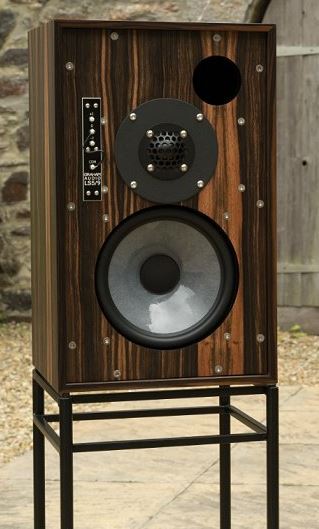
Push the boat out to a goodish 8" plus 2" two way:
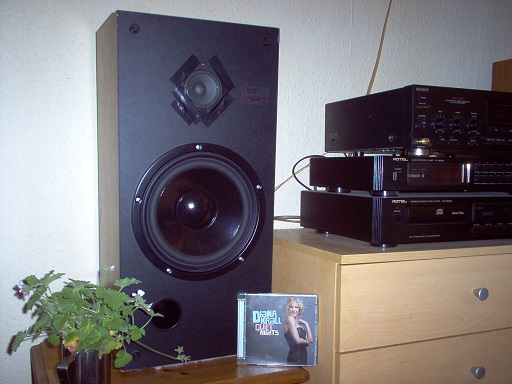
Each of them has compromises. The small ones don't do bass. The big ones don't do top end. Go for the three-way. It does everything.
But however you define it, it highlights a problem in two ways. It's actually trying to match dispersion in wildly different drivers.
Let's look at a successful 5" plus 3/4" two way, loosely a BBC LS3/5A:
Maybe a 6" plus 1.5" Chartwell LS6:
Push the boat out to a goodish 8" plus 2" two way:
Each of them has compromises. The small ones don't do bass. The big ones don't do top end. Go for the three-way. It does everything.
The recessed ones are serious, and not for me to mess with, but they do actually have many digital controls which even after two years I have left out and listened flat, to get a feel for the driver character. They have a presence control of +/-4dB from 800 to 4kHz.
I fully concur with your points system7, correcting the problems of integration.
(My own being the LS 5/8 woofer with the ESS Heil crossing at 1.8kHz, 1st order on mid/woofer, and 4rth LR on Heil. I cannot hear the Xover.)
(I had four pairs of ATC actives, three 50s and the 100s, the latter of which I rebuilt and spent £1k on, and sent a write up to Bill Woodman on what I did.
I fully concur with your points system7, correcting the problems of integration.
(My own being the LS 5/8 woofer with the ESS Heil crossing at 1.8kHz, 1st order on mid/woofer, and 4rth LR on Heil. I cannot hear the Xover.)
(I had four pairs of ATC actives, three 50s and the 100s, the latter of which I rebuilt and spent £1k on, and sent a write up to Bill Woodman on what I did.
As someone who used to mix on various BBC monitors too many years ago, my understanding is that the "BBC dip" is simply a directivity mismatch between the woofer and the tweeter. Since the monitor(s) were designed for flat on-axis response, the off axis response shows the dip:
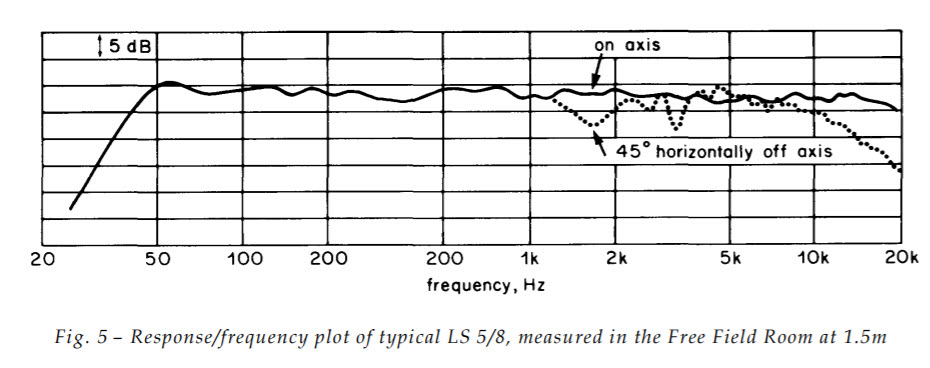
Ref:
http://downloads.bbc.co.uk/rd/pubs/reports/1979-22.pdf
http://downloads.bbc.co.uk/rd/pubs/reports/1983-10.pdf
From Sean Olive on the subject: "Many poorly designed 2-way loudspeakers already have dips in the sound power response in the cross-over range 1-3 kHz where the directivity of the woofer is too high compared to the directivity of the tweeter at those frequencies. As a result, this produces a notch in the sound power response of the loudspeaker, usually followed by a peak. Depending on the bandwidth and depth of the notch, it is the peak that is often heard as sounding objectionable (harshness, hardness or excessive brightness)."
Personally, I did not like the dip for mixing if the monitors were not pointed directly on axis to my ears as one would compensate for the hole in the response, in the mix. Then listening to the mix on loudspeakers with no off axis dip made the mix really bright in our ears most sensitive hearing range.
Ref:
http://downloads.bbc.co.uk/rd/pubs/reports/1979-22.pdf
http://downloads.bbc.co.uk/rd/pubs/reports/1983-10.pdf
From Sean Olive on the subject: "Many poorly designed 2-way loudspeakers already have dips in the sound power response in the cross-over range 1-3 kHz where the directivity of the woofer is too high compared to the directivity of the tweeter at those frequencies. As a result, this produces a notch in the sound power response of the loudspeaker, usually followed by a peak. Depending on the bandwidth and depth of the notch, it is the peak that is often heard as sounding objectionable (harshness, hardness or excessive brightness)."
Personally, I did not like the dip for mixing if the monitors were not pointed directly on axis to my ears as one would compensate for the hole in the response, in the mix. Then listening to the mix on loudspeakers with no off axis dip made the mix really bright in our ears most sensitive hearing range.
Attachments
Yes, I had all that here before my work on my own design in '03, and by pure luck the original Xover for the Heil was at 1.8k, as is that on the LS 5/8 which worked well.
(Slight dip at 1.8k where arrow points)
I still do not get a clear coherent and valid analysis of the reasoning behind what is being done; surely we listen on axis, which is flat, and if off axis the dip will lessen glare.
(Slight dip at 1.8k where arrow points)
I still do not get a clear coherent and valid analysis of the reasoning behind what is being done; surely we listen on axis, which is flat, and if off axis the dip will lessen glare.
All of my big builds are active .. and in all of them I like a 3dB dip around 2KHz.
2kHz is at the heart of the mids region. Where instruments and voices fight for prominence in the mix. EQ there can pull the whole perspective forward or push it back.
3.5kHz is at the ear canal's resonance center. Sounds at 3-4kHz can quickly become aggressive. Either by EQ or because of a power response flare due to an abrupt radiation pattern change.
Wasn't this also called the Gundry Dip, a slight dip in the 2 to 3kHz region?
No: Gundry Dip or BBC Dip?
Folks, the so called BBC dip is simply due to a directivity mismatch between the woofer and tweeter as these speakers were optimised for flat on axis amplitude response which resulted in the dip off axis. In other words, it is a design flaw.
Newer research involving Floyd Toole's "spinorama" objective speaker measurement process and Sean Olive's subjective listener preferences shows that smooth off axis response is just as important as smooth on axis response.
It is now embodied in an ANSI/CTA 2034-A Standard Method of Measurement for In-Home Loudspeaker which can be downloaded for free (attached).
Or if you really want to dig into it, purchase Floyd Toole's book or get an AES membership and download the dozens of papers that shows their research and results to be both predictable and repeatable.
Attachments
A newly coined term for the same thing. But Dick Gundry's son Kenneth once in another forum clarified that his father (a historical BBC tech) had nothing to do with it: Gundry Dip or BBC Dip?
2kHz is at the heart of the mids region. Where instruments and voices fight for prominence in the mix. EQ there can pull the whole perspective forward or push it back.
I suggest everyone should play around with an EQ in this range at least once. It is quite intesersting what it does to localisation.
Regards
Charles
The so called BBC-dip/Gundry dip could be motivated by the ears sensitivity to certain frequencies (see equal loudness contour) and that a horisontal and straight frequency curve can cause listening fatigue, especially with poorly recorded music.
Equal-loudness contour - Wikipedia
Equal-loudness contour - Wikipedia
- Status
- This old topic is closed. If you want to reopen this topic, contact a moderator using the "Report Post" button.
- Home
- Loudspeakers
- Multi-Way
- BBC Dip
